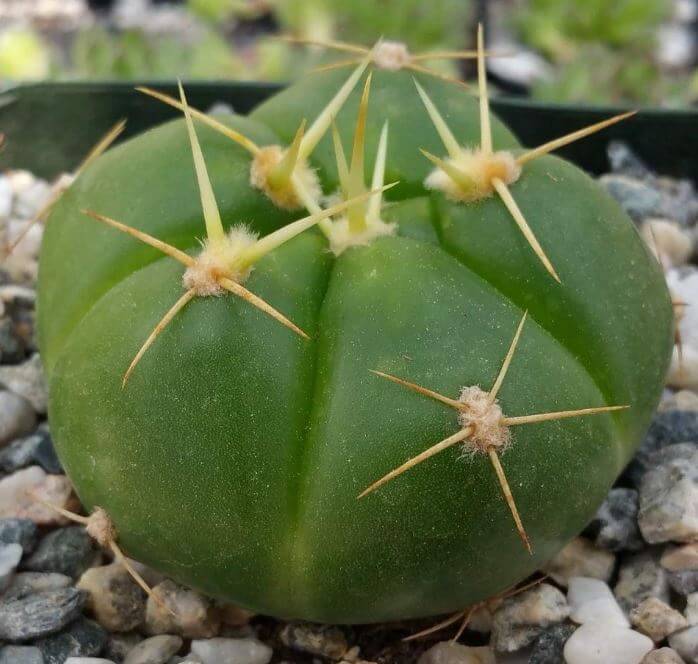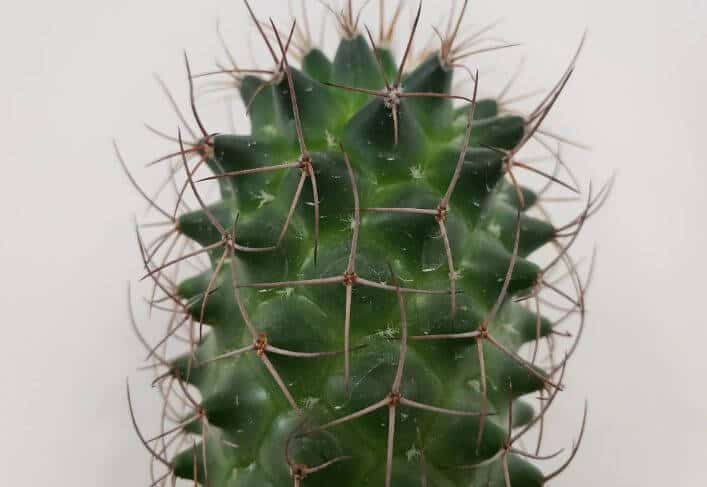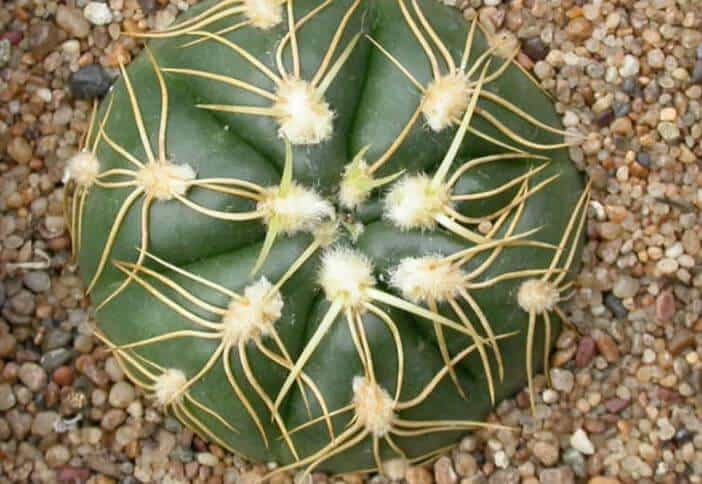Last Updated on January 6, 2023 by a Friendly Gardener
The spider cactus is, as the name suggests, a cactus plant that is native to South America. If you’re looking at Gymnocalycium baldianum, spider plant cactus is a succulent that is popularly grown at higher altitudes in grasslands.
It is also called the Dwarf Chin cactus and can be grown outdoors or indoors. Cacti are usually grown for their ornamental value and are found in both pots and gardens. As you probably know, they have thorns on their stems and produce delicate flowers.
Spider Cactus Plant Care

Most of them are from the Cactaceae family and perform very well when it comes to drought resistance. And while they need a good deal of light, the spider cactus plant care isn’t a big puzzle. They are quite easy to care for. Here are the details.
Light
These plants are heliophilic, which means they need plenty of light for healthy growth and to produce flowers. You can grow it on your balcony or in a garden that doesn’t get much shade. But if the plant is exposed to the harsh sun for a long time, it will be damaged.
So, it is recommended that you find a place where the plant gets a good deal of light but in the summer season, it should not be exposed to the high temperatures of a blazing sun.
Water

These plants are originally from tropical, sub-tropical, or semi-arid places that get a lot of sunlight and not too much rain. So, you should be able to recreate those circumstances.
The ideal temperature for these plants is in the 68 to 95 degrees F range. If the temperature is higher than this, the plant starts to become dormant. You should also make sure that the plant’s immediate environment is not too humid although it should have good ventilation.
Soil
These plants need soil that is fertile but rich in gravel. You should get a water-permeable mix with a pH value that is between 6 and 7. The best formula for that kind of soil mix is 60 percent vermiculite and 20 percent peat moss or coco coir along with 20 percent sandy soil.
You can add a little bit of organic matter like vermicompost or eggshell powder to increase the fertility of the soil. The vermiculite is meant to increase the soil’s air permeability.
Spider cactus roots need to have enough oxygen because they have a tendency to experience a deficiency in this area. So, if you don’t ensure air and water permeability, the plant will run into trouble by way of root rot.
And when you see the problem, you should make sure that the water is passing through the soil quickly enough instead of seeping through the topsoil slowly. To ensure that the air permeability is intact, you should loosen the soil and repot these plants every year.
Fertilizer

The growing season of these plants is in summer, fall, and spring. So, that’s when you can give them some extra nourishment in the form of liquid fertilizer. You should do it no more than once a month and give it a rest in the winter months.
Try to find the slow-release type and mix only a small amount with the soil. The best time to do this is in the fall or spring when you will need to repot the plant. Make sure your fertilizer has a good deal of nitrogen and phosphate-potassium if you are doing this in the seedling season.
And if you can’t do it all at once, remember that it is best to use mild fertilizer multiple times than a strong dose just once. You know you’ve overdone it if the plant’s base turns yellow and the growth gets slower. That’s your cue to stop.
Potting

As mentioned earlier, this should be done once a year. You should aim to do this in the fall or spring when the temperature is between 59 to 68 degrees F. when you’re seeding, you should make sure that the air is highly humid.
You can place a plastic cover of some sort on the soil to cover it till the seeds start the germination process. If you’re planting the seeds in pots, you should use permeable clay.
Make sure you get a pot of the right size. If it’s too big, the water gets accumulated and if it’s too small, the roots won’t be able to develop and grow freely. And before you put it in the pot, make sure the soil is exposed to the scalding sun so that it is free of pathogens.
If you’re planting the seeds in a garden, you should make sure that the soil is loose and the area gets full sun. Get rid of all the weeds in the area and change the soil if you need to.
Water permeability is an important detail to remember here so that there is no root rotting. Make sure you wear gloves and handle the plant with tongs so that you don’t get pricked.
Pest Control
Spider cactus plants attract many types of viruses which result in local necrosis and mosaic leaves. You might also see ringed or chlorotic spotting on the stems, which means the plant is in trouble.
This is more likely when the temperatures are high and there is drought. But you should also check to see if there is a diseased plant nearby since those are often the main source.
Once you have this problem, you should isolate the plant and use disinfectants to graft the plant. Sometimes, you will have to destroy the plant altogether.
Spider mites are also attracted to this plant and do their work at the back of a leaf. If and when this happens, you should wash the leaf thoroughly and spray them with a mite pesticide multiple times. Make sure you ventilate the space and keep an eye on dry and sweltering weather.
Aphids are also known to attack spider cactus plants. You know that’s happening when you see the plant turn yellow or get distorted. Get rid of them with water and if it’s an infestation, you should get yourself an aphid killer spray.
Parting Thoughts

As you can see, it is rather easy to take care of spider cactus plants. Just make sure they get the right amount of sun and water them with care. The soil should be water and air permeable and keep an eye out for viral infections. That’s pretty much it.


